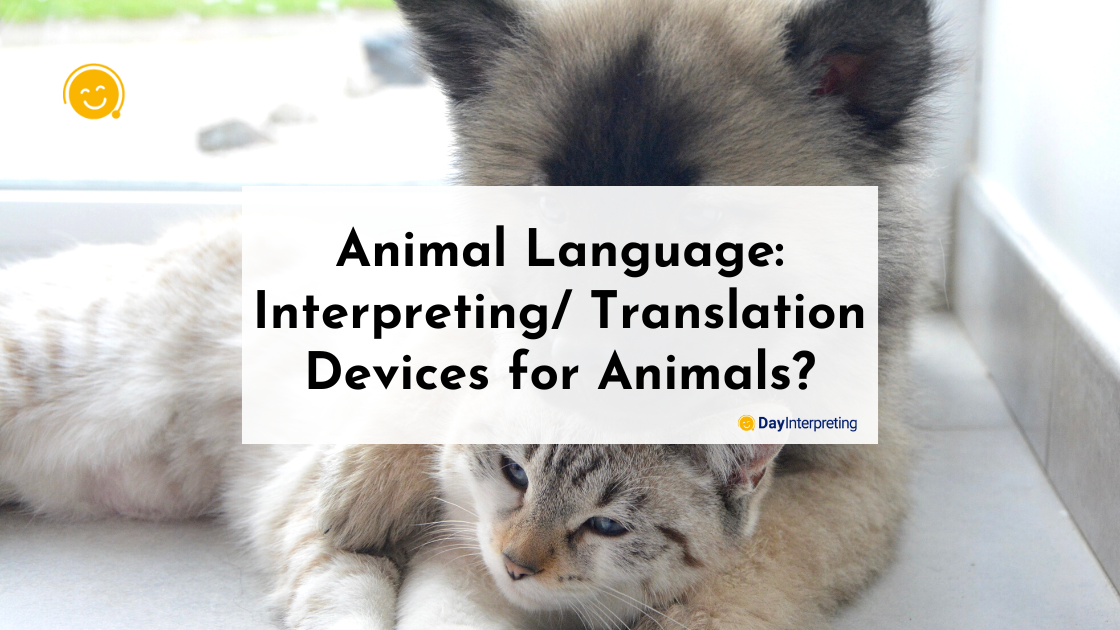We love our furry friends, and for most people, they’ve become part of the family and make meaningful contributions in their unique way. Wouldn’t it be nice if you could communicate with your pets/animals in the same way you’re able to communicate with them, and they understand? But how can we begin to tackle animal language interpreting?
Interpreting/translation devices for animals have been part of many discussions for quite some time. Within the last few years, more and more efforts have been made to move this idea from talk to reality. In fact, there are forms of these devices in existence today, some of which we’ll be taking a look at in this blog post.
Keep reading to find out more.
Does Animal Language Really Exist?
Do you think animals have a language of their own? Well, to answer this question, we have first to acknowledge that animals do communicate with each other and are also able to communicate or understand us. So for the sake of our topic today, we can safely conclude that animals do have a ‘language’.
Where the real question to answer comes in is whether or not animals have a translatable language. And, given the fact that we’ve been working on technologies /devices to help us communicate with them, then it’s also safe to say that there’s a strong possibility that this is also true.
Now that we’re aware of these facts being true, we can safely move on to looking at some developments within this sphere over the past few years.
Animal Language Translation/Interpreting Solutions
Bowlingual
This is a dog-to-human translation device. It was developed in 2002 by a Japanese toy company called Takara. It was initially created only for the Japanese market of pet owners, but after its release, there became a growing demand for it to be expanded into other markets.
Eventually, there were versions of Bowlingual created for markets in South Korea, Canada, and the United States.
This device was advertised as a translation device, but it was actually a dynamic analyzer for dogs. It was, however, still beneficial to dog owners. Bowlingual recorded and analyzed the dogs’ barks and put them into six categories. The categories were: Happy, Sad, on-guard, frustrated, needy, and assertive.
After interpreting a dog’s emotions, the small hand-held device gave a rough translation.
Eventually, the craze for the device died down as more and more pet, and animal analysts deemed it to be wildly inaccurate and inconsistent for humans to understand their pet dogs effectively.
The ‘Catterbox’
The Catterbox was created for pet owners to chat with their cats. This device aimed to interpret the vocalizations of cats for humans. But, there’s a big catch to the Catterbox; it was a fictitious creation from a significant cat food company to market their cat food line. However, the idea of the device got extremely popular, so much so, that a major UK company actually went ahead and created a prototype and released 50 of them. The internet is still awaiting reviews from those who tested it to know whether or not it actually worked.
Linguistic Solutions on the Rise
Since the creation of these two devices, technology has advanced significantly, especially in the field of Artificial Intelligence (AI).
AI has helped in decoding ancient languages of the past. As a result, there are experiments with the same AI technology to see if it can interpret the vocalizations of animals and their facial expressions into a language that humans can understand.
Given these ongoing experiments and the continuous developments in artificial intelligence, it is believed that such a device can be produced within the next 10 years.
Already there are devices out there that show that progress is being made. In 2020, a Japanese company unveiled a product at CES 2020 (Consumer Electronics Show), consisting of a harness, a heart-rate monitor, and an app that helps humans to understand what their dogs are thinking.
The device was created based on the premise that when dogs get excited or happy, their heart rate increases. The company, therefore, purports that based on a dog’s heart rate, they should be able to determine what a dog might be thinking.
The interpretation is communicated to humans through lights, with green symbolizing how relaxed a dog is and red as the extreme, which indicates that they’re stressed.
Wrapping Up Animal Language Interpreting
We love our animals, and anything that can be done to help us to understand them better is of great value. Advancements in technology show that the possibilities are there for us to communicate with our pets; when we break the code is another mystery we’re hoping can be solved shortly.
At Day Interpreting, we provide certified language interpreters at your fingertips. Download the Day Interpreting app today from the Google Play Store or the App Store





0 Comments